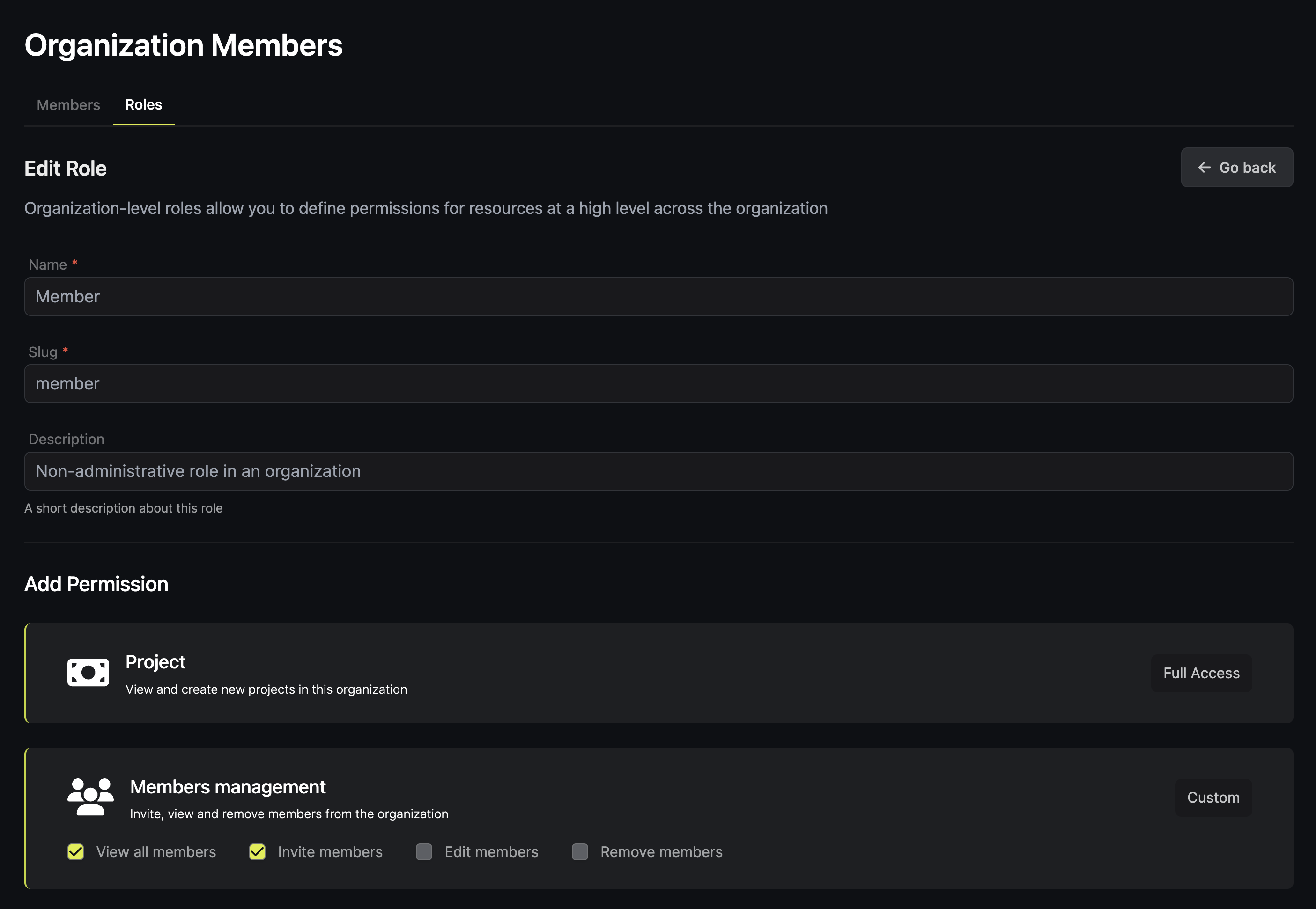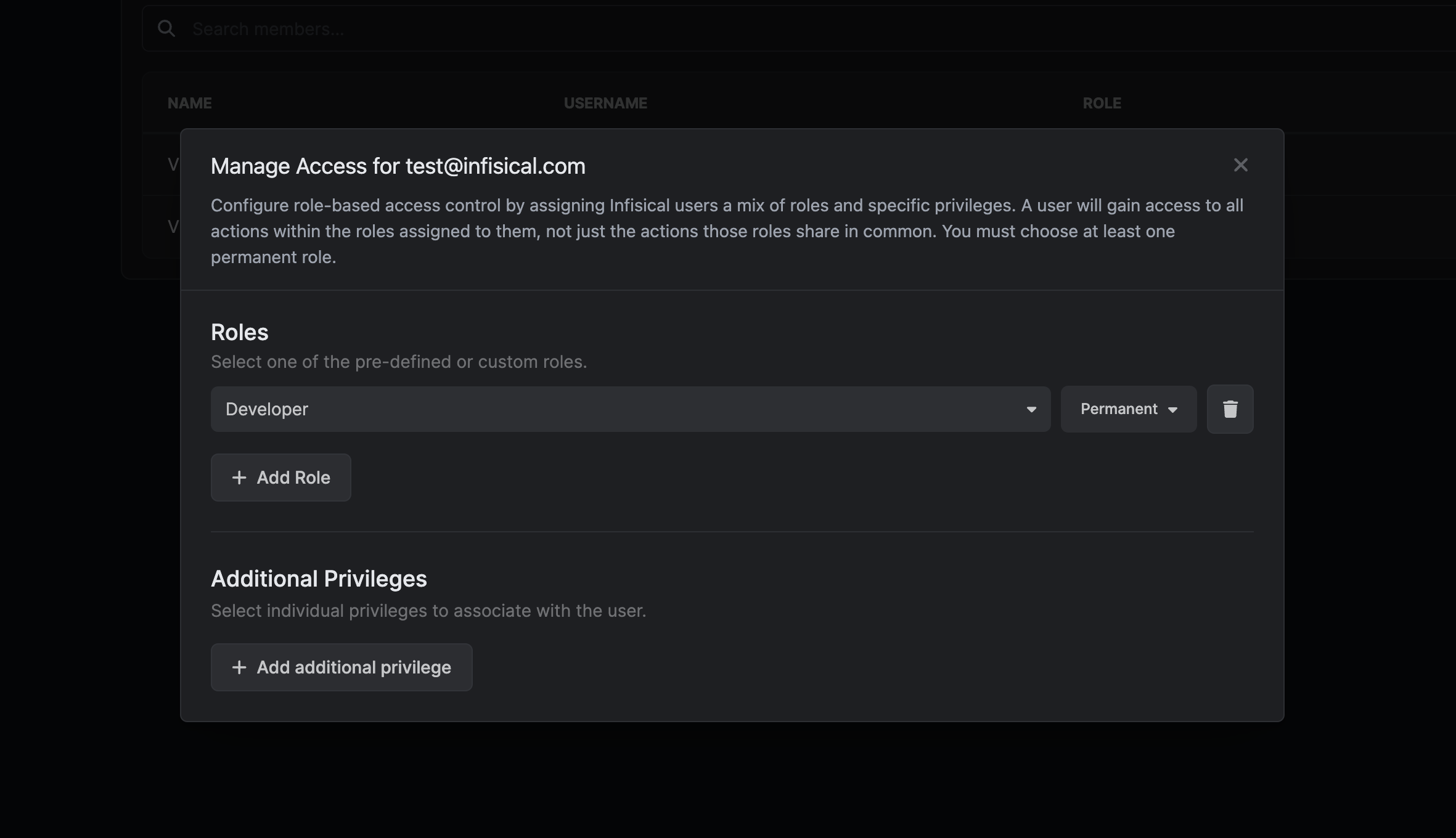Organization-level access controls
By default, every user and machine identity in a organization is either an admin or a member. Admins are able to perform every action with the organization, including adding and removing organization members, managing access controls, setting up security settings, and creating new projects. Members, on the other hand, are restricted from removing organization members, modifying billing information, updating access controls, and performing a number of other actions. Overall, organization-level access controls are significantly of administrative nature. Access to projects, secrets and other sensitive data is specified on the project level.
Project-level access controls
By default, every user in a project is either a viewer, developer, or an admin. Each of these roles comes with a varying access to different features and resources inside projects. As such:- Admin: This role enables identities to have access to all environments, folders, secrets, and actions within the project.
- Developers: This role restricts identities from performing project control actions, updating Approval Workflow policies, managing roles, editing and removing project members, and more.
- Viewer: The most limiting bulit-in role on the project level – it forbids user and machine identities to perform any action and rather shows them in the read-only mode.

Creating custom roles
By creating custom roles, you are able to adjust permissions to the needs of your organization. This can be useful for:- Creating superadmin roles, roles specific to SRE engineers, etc.
- Restricting access of users to specific secrets, folders, and environments.
- Embedding these specific roles into Approval Workflow policies.
It is worth noting that users are able to assume multiple built-in and custom roles. A user will gain access to all actions within the roles assigned to them, not just the actions those roles share in common.


